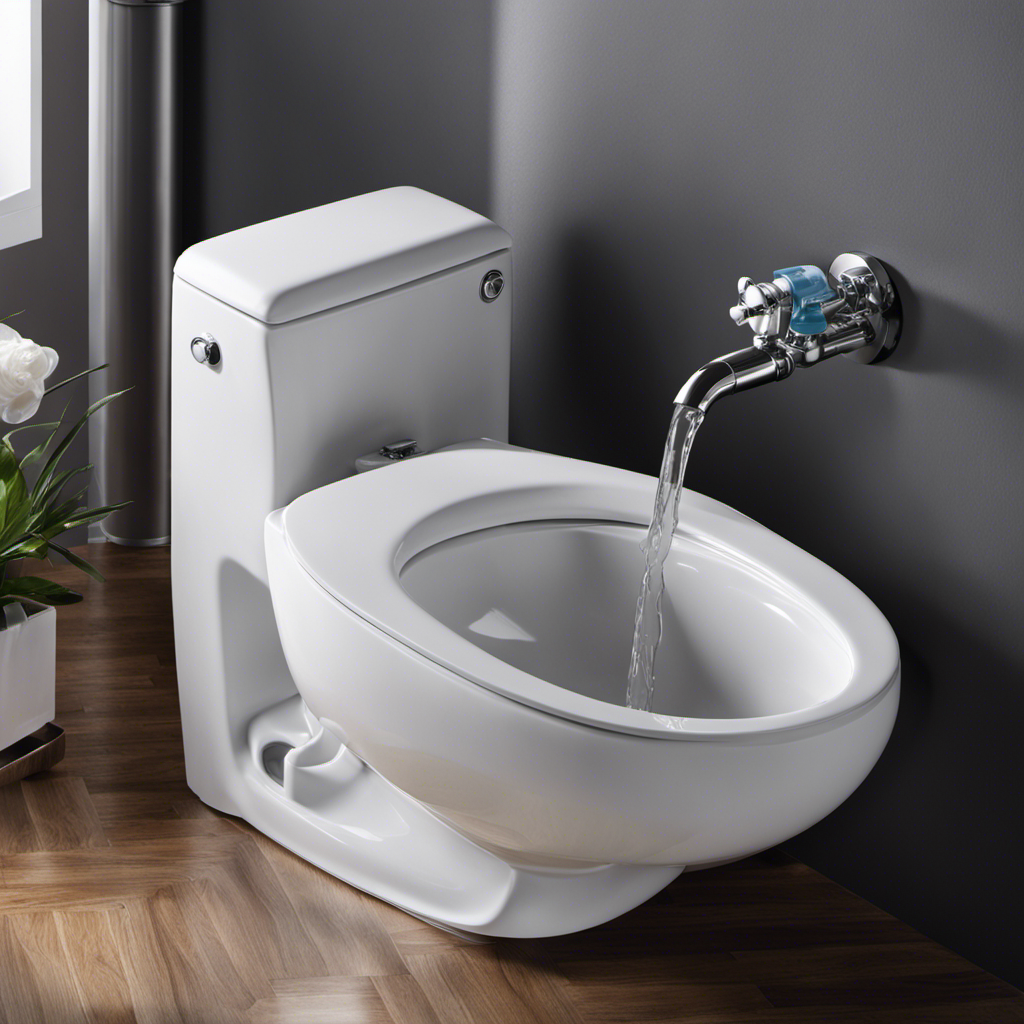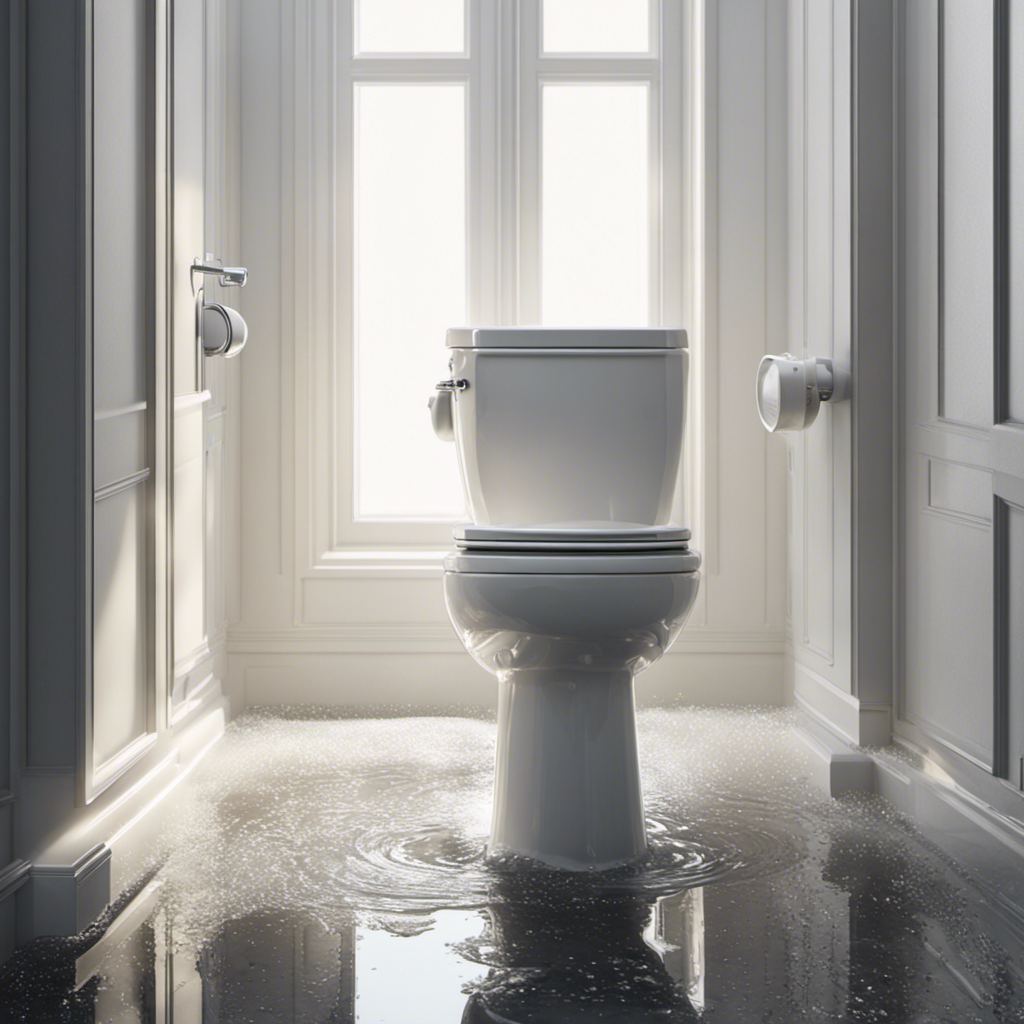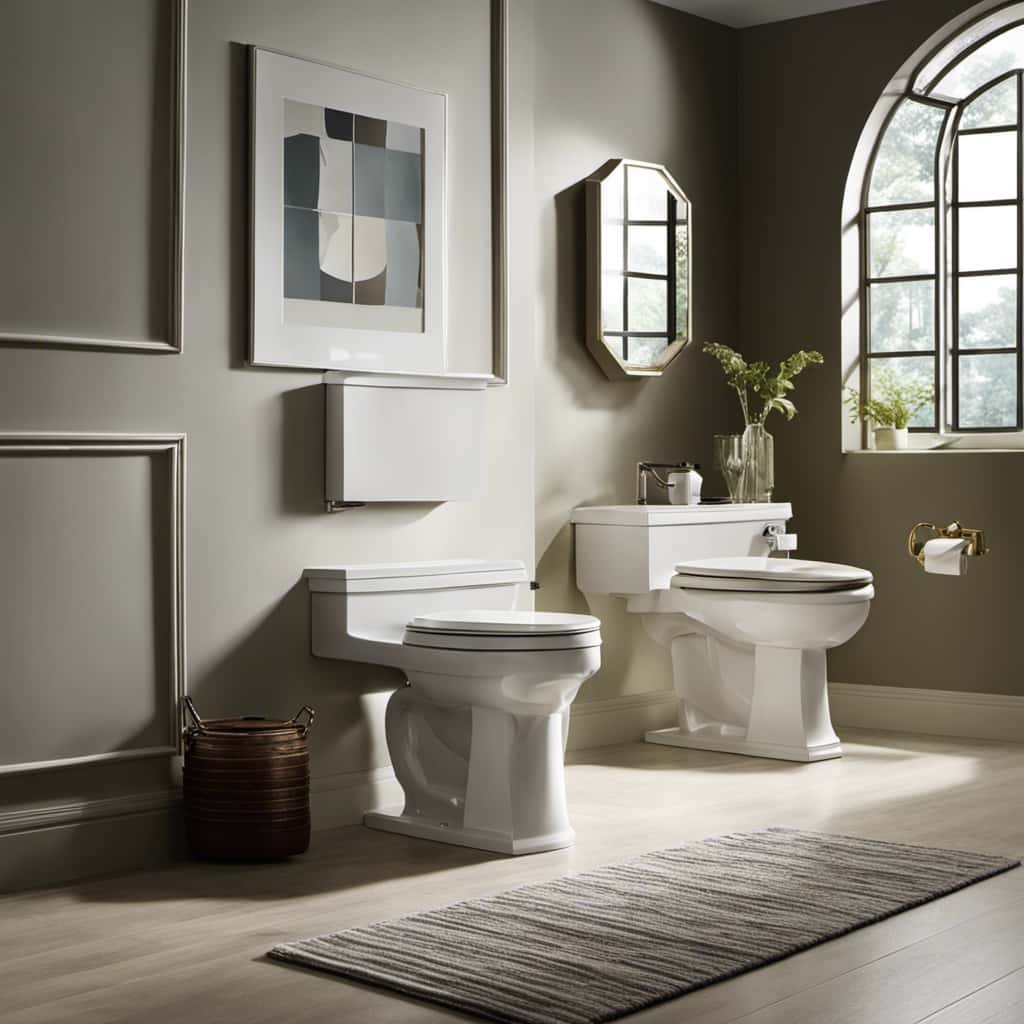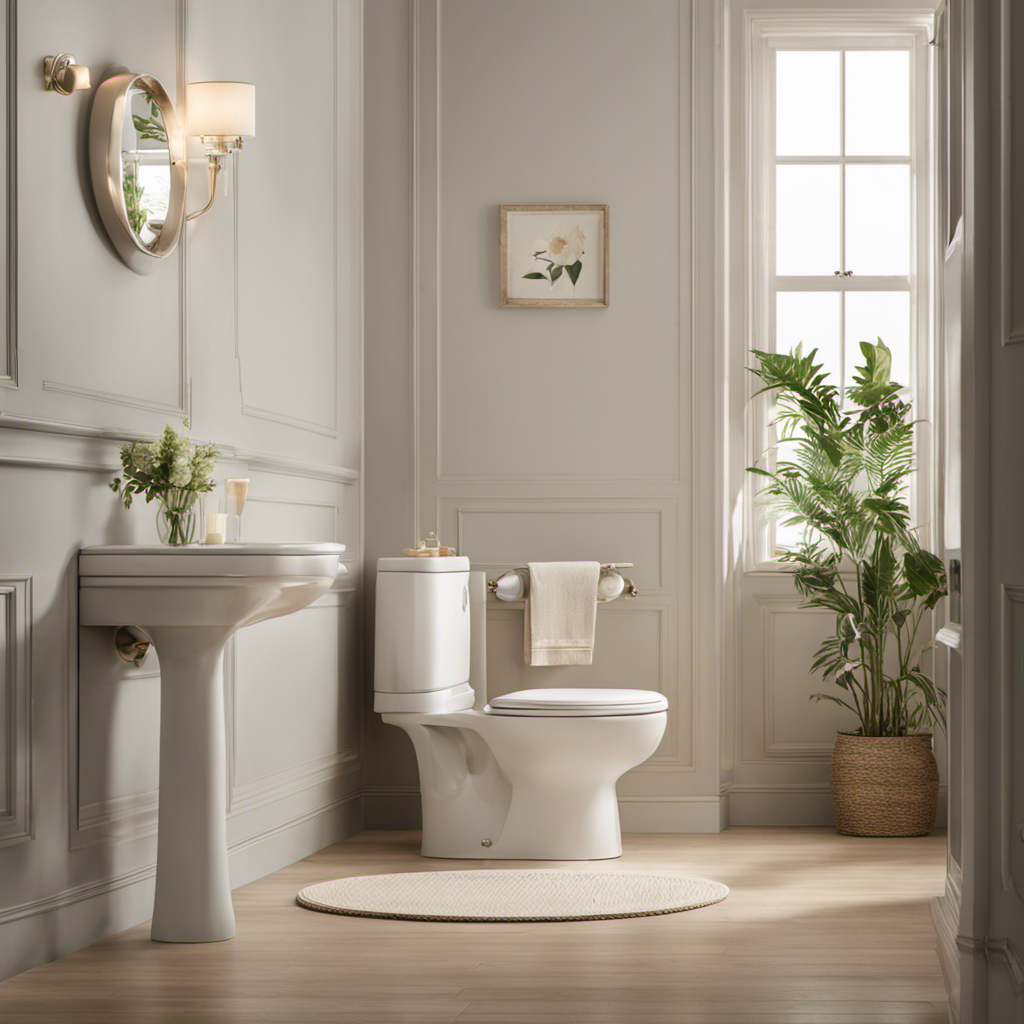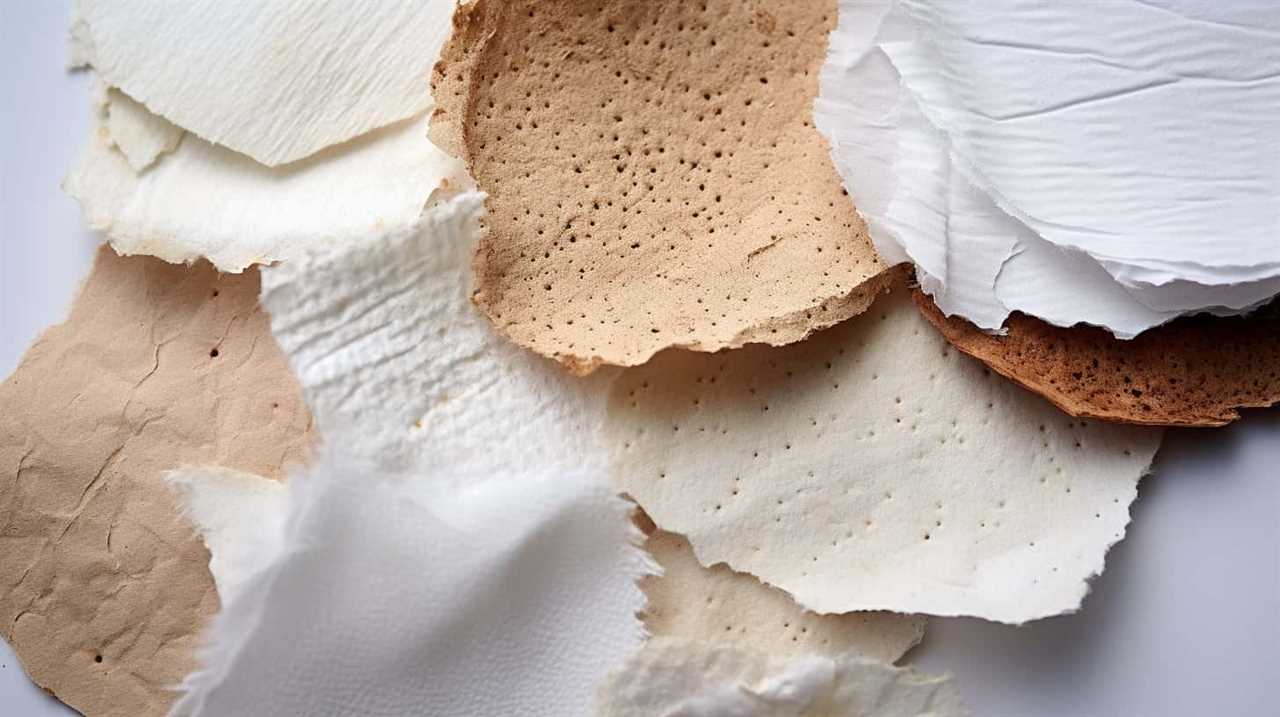As they say, ‘When nature calls, the toilet must answer.’ But what do you do when your toilet refuses to fill up?
Don’t panic, because I’ve got you covered. In this article, I will delve into the common causes of a toilet not filling up and guide you through the steps to fix it.
From understanding the water supply valve to troubleshooting a faulty fill valve, we will tackle the issue head-on with technical precision.
Let’s get that toilet filling up again in no time!
Key Takeaways
- Faulty fill valve can cause a toilet not to fill up properly.
- Cracks in the toilet tank may lead to water leakage and prevent proper filling.
- Decreased water pressure can be caused by a malfunctioning fill valve.
- Promptly addressing any issues with the toilet is essential for its functionality and water pressure maintenance.
Common Causes of a Toilet Not Filling Up
One common cause of your toilet not filling up could be a faulty fill valve. The fill valve is responsible for regulating the water flow into the toilet tank. If it is not functioning properly, it can lead to a decrease in toilet water pressure, resulting in an insufficient amount of water filling up the tank.
Another potential cause could be toilet tank cracks. Cracks in the tank can cause water to leak out, preventing it from reaching the desired level. These cracks can occur due to various reasons, such as age, impact, or poor maintenance.
It is essential to address these issues promptly to ensure proper functioning of the toilet and maintain optimal water pressure.
Understanding the Water Supply Valve
To ensure the water supply valve is open, check if you can see the handle in the correct position. Troubleshooting water pressure and checking for leaks are crucial steps in understanding the water supply valve. Here are some key points to keep in mind:
- Inspect the valve handle: Make sure it is turned counterclockwise to the fully open position.
- Check for water leaks: Look for any signs of water leakage around the valve or the surrounding pipes.
- Test the water pressure: Use a pressure gauge to measure the water pressure coming into your toilet.
- Clean or replace the valve: If the valve is clogged or damaged, it may need to be cleaned or replaced.
- Consult a professional: If you are unsure about the condition of your water supply valve, it’s best to seek professional assistance.
Understanding the water supply valve is essential in troubleshooting toilet fill-up issues. However, if the valve is functioning properly, potential issues with the toilet float may need to be addressed.
Potential Issues With the Toilet Float
If the toilet float isn’t adjusted correctly, it can cause problems with the toilet’s water level. The toilet float is a crucial component that regulates the flow of water into the tank. When the float is faulty or misaligned, it can disrupt the filling process, leading to low water levels or continuous running of the toilet.
To address this issue, it is essential to understand the process of toilet float adjustment. Begin by identifying a faulty float mechanism, which can usually be found in the toilet tank. Look for signs of damage or wear, such as cracks, rust, or sticking parts.
Once identified, adjust the float to the appropriate level, ensuring it rises and falls smoothly with the water level. This adjustment will help maintain the correct water level in your toilet tank, preventing any further issues.
Troubleshooting a Faulty Fill Valve
Check if the fill valve is the cause of the toilet not filling up properly. The fill valve is responsible for regulating the flow of water into the tank. If it’s faulty, it can prevent the tank from refilling after each flush.
Here are some signs that indicate a faulty fill valve:
- Constant running water in the toilet bowl.
- Low water level in the tank.
- Slow or weak water flow during the refill process.
- Strange noises coming from the toilet after flushing.
- Water leaking from the tank or fill valve.
To resolve this issue, you may need to replace the fill valve entirely or make adjustments to the water pressure. By addressing these problems, you can ensure that your toilet fills up properly and functions as it should.
Now, let’s move on to the steps to fix a toilet that won’t fill up.
Steps to Fix a Toilet That Won’t Fill Up
First, you’ll need to locate the water supply valve behind the toilet. Once you have found it, turn the valve counterclockwise to ensure that it is fully open. This will allow water to flow freely into the toilet tank.
If the water pressure is still low, you may need to check for a clogged toilet supply line. To do this, you can follow these steps:
- Shut off the water supply valve.
- Disconnect the water supply line from the toilet tank.
- Use a bucket to catch any excess water that may spill out.
- Inspect the supply line for any blockages or debris.
- If you find any clogs, use a small brush or pipe cleaner to remove them.
Frequently Asked Questions
How Can I Determine if the Water Supply Valve Is the Cause of My Toilet Not Filling Up?
To determine if the water supply valve is the cause of my toilet not filling up, I would inspect the valve for any leaks or blockages. Additionally, troubleshooting the float mechanism can help identify any issues.
What Are Some Potential Problems With the Toilet Float That Could Prevent the Toilet From Filling Up?
When troubleshooting toilet float issues, it’s important to consider potential problems. The float may be stuck, damaged, or improperly adjusted, preventing the toilet from filling up properly. Regular toilet float maintenance can help prevent these issues.
Can a Faulty Fill Valve Be Repaired, or Does It Need to Be Replaced?
A faulty fill valve can cause a toilet not to fill up properly. Depending on the extent of the damage, it may need to be repaired or replaced. Signs of a faulty toilet fill valve include inconsistent filling, slow filling, or no water flow at all.
Are There Any Temporary Fixes I Can Try Before Calling a Plumber to Fix My Toilet That Won’t Fill Up?
Before calling a plumber, I suggest trying these temporary fixes for a toilet that won’t fill up. Start by checking the water supply valve, inspecting the fill valve, and ensuring the float is functioning properly.
Is It Possible for a Toilet to Not Fill up Due to a Clog in the Water Line?
It’s possible for a toilet to not fill up if there’s a clog in the water line. The obstruction prevents water from reaching the tank, causing the filling issue. A plumber should be contacted to address the clog.
Conclusion
In conclusion, it can be frustrating when your toilet refuses to fill up. However, by understanding the common causes and troubleshooting the water supply valve, toilet float, and fill valve, you can fix the issue and restore your toilet’s functionality.
Remember to always turn off the water supply before attempting any repairs. With a little know-how and some handy tools, you’ll be able to enjoy a fully functioning toilet once again.
So, don’t let a non-filling toilet dampen your spirits, tackle the problem head-on and become the hero of your bathroom!
